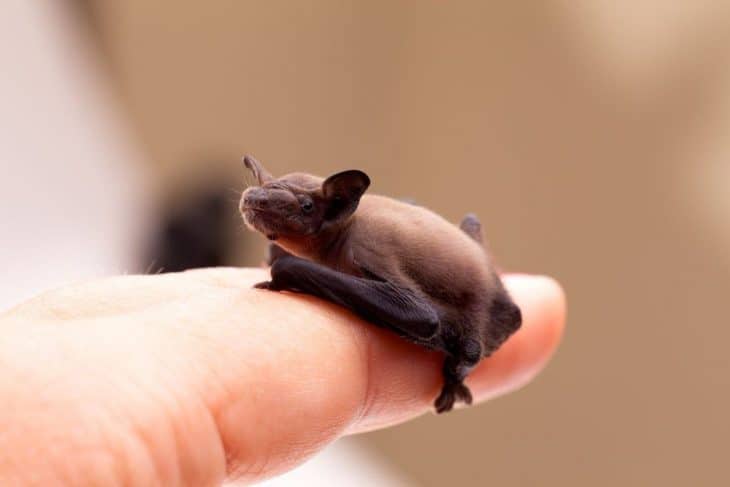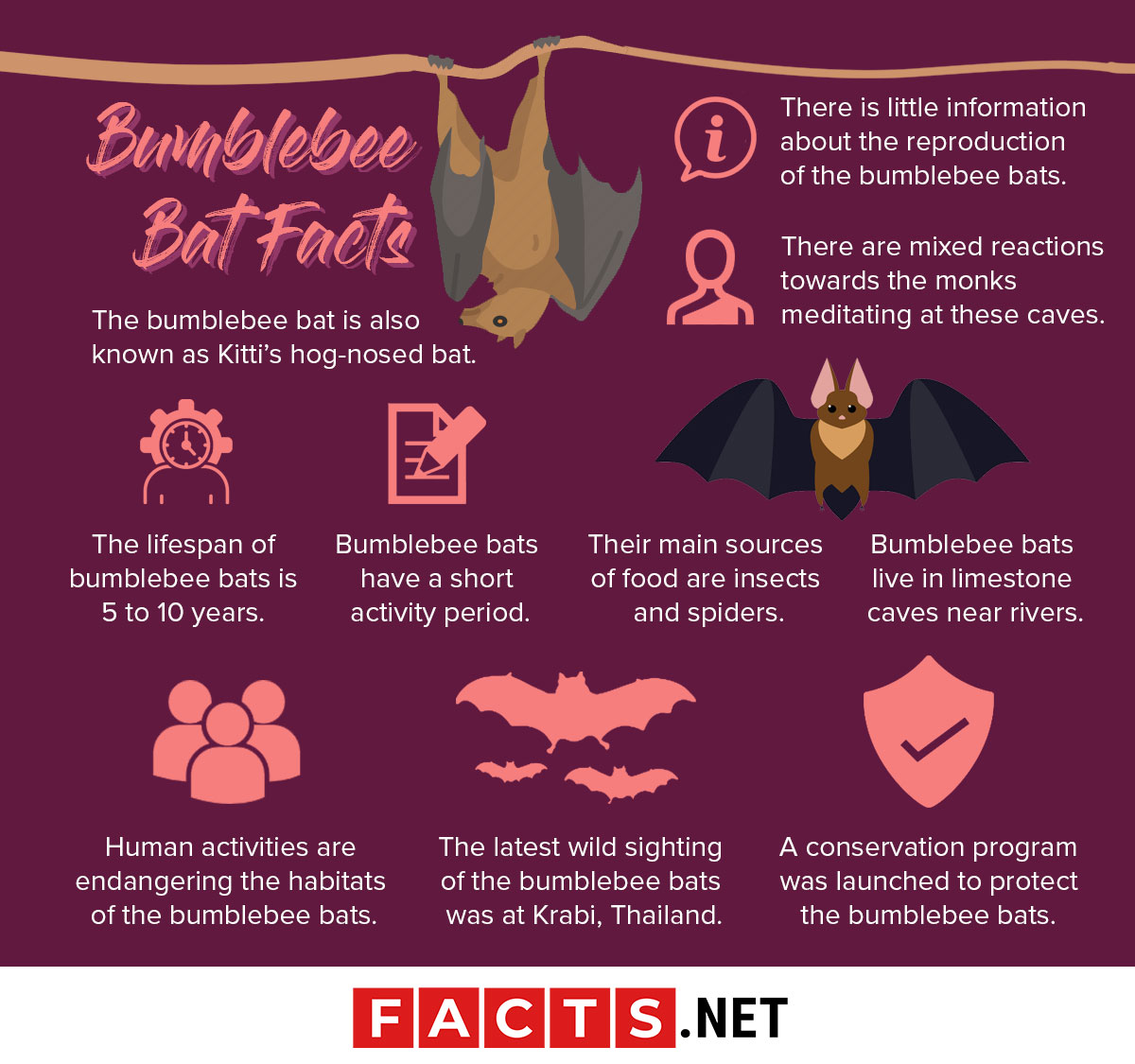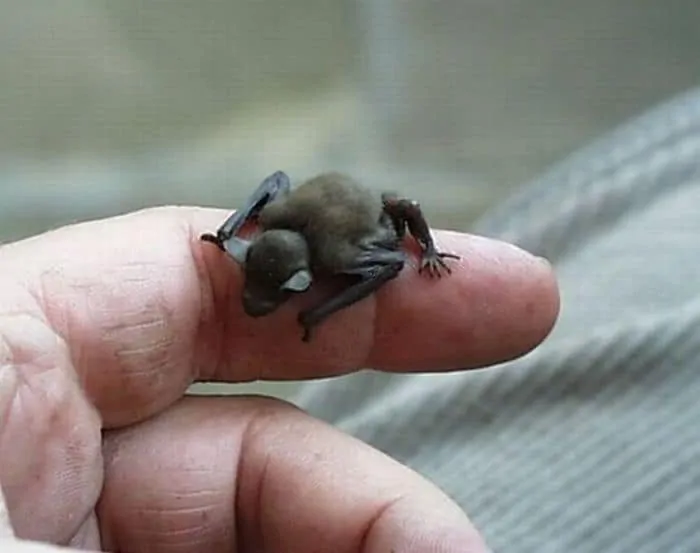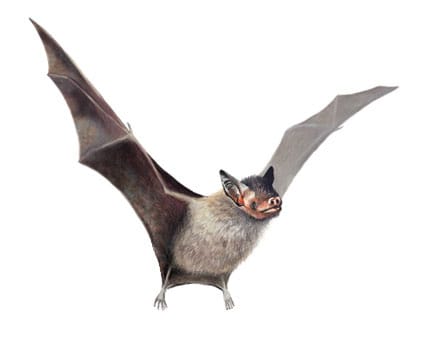
Crowned as the smallest mammal in the world by size, a bumblebee bat can actually rest comfortably on your finger. Apart from its resemblance to the bumblebees in size, these little bats are less scary than you’d expect. Learn more about them in these bumblebee bat facts and you might just like them a little more.
- Bumblebee bats are only found in 2 countries, Thailand and Myanmar.
- They live in roosts of 10 to 100 bats.
- A bumblebee bat weighs as much as a dime, at about 2 grams.
- Its length is about 29 to 33 millimeters.
- They have a wingspan of about 170 millimeters.
- They are the smallest species of bats in the world.
- The bumblebee bats are listed as Near Threatened species according to the International Union for Conservation of Nature (IUCN).
- The current bumblebee bat population is at 6600.
- The natural predators of bumblebee bats are birds, snakes, squirrels, and cats.
- They use echolocation to navigate their way around.
- Bumblebee bats have a brownish-red colored body, with a paler color on the underside.
- They do not have tails. Instead, they have a large web of skin attached to their hind legs, called uropatagium, to assist them when flying and catching insects.
- Female bumblebee bats have two sets of nipples. One set is on her chest, and the other at her pubic area. However, the set of nipples at the pubic area is not fully developed.
- Male bumblebee bats have large swelling in the glands at the base of their throats.
- Bumblebee bats have curled toes and a tendon locking mechanism, which allows them to roost with ease.
- The nickname bumblebee bat came from its resemblance to the bumblebee in terms of size.
- They have snouts, with thin vertical nostrils, which give them pig-like faces.
- Their ears are large, at 9 to 10.2 millimeters long, as compared to their body size.
- These roosts of bats do not live close to each other; they usually spread out so that they are not touching each other.
- Bumblebee bats migrate seasonally between caves.
Bumblebee Bat Facts Infographics

The bumblebee bat is also known as Kitti’s hog-nosed bat.
Definitely an adorable name for the world’s smallest mammal. The binomial name of the bumblebee bat is Craseonycteris thonglongyai. This species is named after its discoverer, Kitti Thonglongya, a Thai zoologist, who founded them in 1973. It was his colleague, John E. Hill who named the species in his honor after Kitti Thonglongya passed away from a heart attack.

There is little information about the reproduction of the bumblebee bats.
Female bumblebee bats give birth to only one offspring every year in April during the dry season. Bumblebee bats are extremely small when they are born. These baby bats remain attached to their mothers at one of her two nipples all the time. After the baby bat has grown larger, the mother bat will then leave it alone in the nursery cave while she forages.
The lifespan of bumblebee bats is 5 to 10 years.
Researchers do not have their exact lifespan. However, based on studies of other similar bat species, the average lifespan is estimated to be between 5 and 10 years.
Bumblebee bats live in limestone caves near rivers.
These bats live near the tops of the caves for warmth. Bumblebee bats are mostly found in limestone caves in western Thailand. More specifically, they are under legal protection in Sai Yok National Park. They are also found in the southeastern part of Myanmar, near the shared borders with Thailand.
Bumblebee bats have a short activity period.
Every day, they only leave their caves for 30 minutes in the evening, and 20 minutes at dawn for foraging. They normally fly along the top of bamboo trees and they catch their prey in flight. They do not fly more than 1 kilometer away from their caves.
Their main sources of food are insects and spiders.
As bumblebee bats are insectivores, they can contribute towards pest control. However, the impact is not substantial due to their small population size.

Human activities are endangering the habitats of the bumblebee bats.
Ever since the discovery of bumblebee bats, tourists have been flocking to these sites just to have a look at these bats. Furthermore, locals even captured them for sale as souvenirs. Other human activities include limestone extractions and deforestations. These result in loss of natural habitat and a decrease in prey hunting activities for the bumblebee bats.
There are mixed reactions towards the monks meditating at these caves.
Many are against the monks meditating at these caves as the smoke given off can potentially harm the bats. However, the good news is, monks in Myanmar have become the cave protectors instead. They occupy the entrances, in turn preventing hunters and drug addicts from entering the caves and destroying the natural habitats.
A conservation program was launched to protect the bumblebee bats.
In 2007, the Zoological Society of London (ZSL) launched the Evolutionarily Distinct and Globally Endangered (EDGE) project. Bumblebee bats were one of the first 10 focal species to be protected under this project. Currently, the bumblebee bat falls under the Vulnerable category, with an EDGE score of 4.73.
The latest wild sighting of the bumblebee bats was at Krabi, Thailand.
About twenty bumblebee bats were found clinging against the 10-meter high ceiling in Phra Phutthabat Cave in Krabi. These bats have the same reddish-brown color with black wings. However, they are not confirmed to be bumblebee bats yet. Experts are still verifying the identity of these bats, and if they turn out to be bumblebee bats, this would be the second place in Thailand the bats can call home.
Was this page helpful?
Our commitment to delivering trustworthy and engaging content is at the heart of what we do. Each fact on our site is contributed by real users like you, bringing a wealth of diverse insights and information. To ensure the highest standards of accuracy and reliability, our dedicated editors meticulously review each submission. This process guarantees that the facts we share are not only fascinating but also credible. Trust in our commitment to quality and authenticity as you explore and learn with us.
